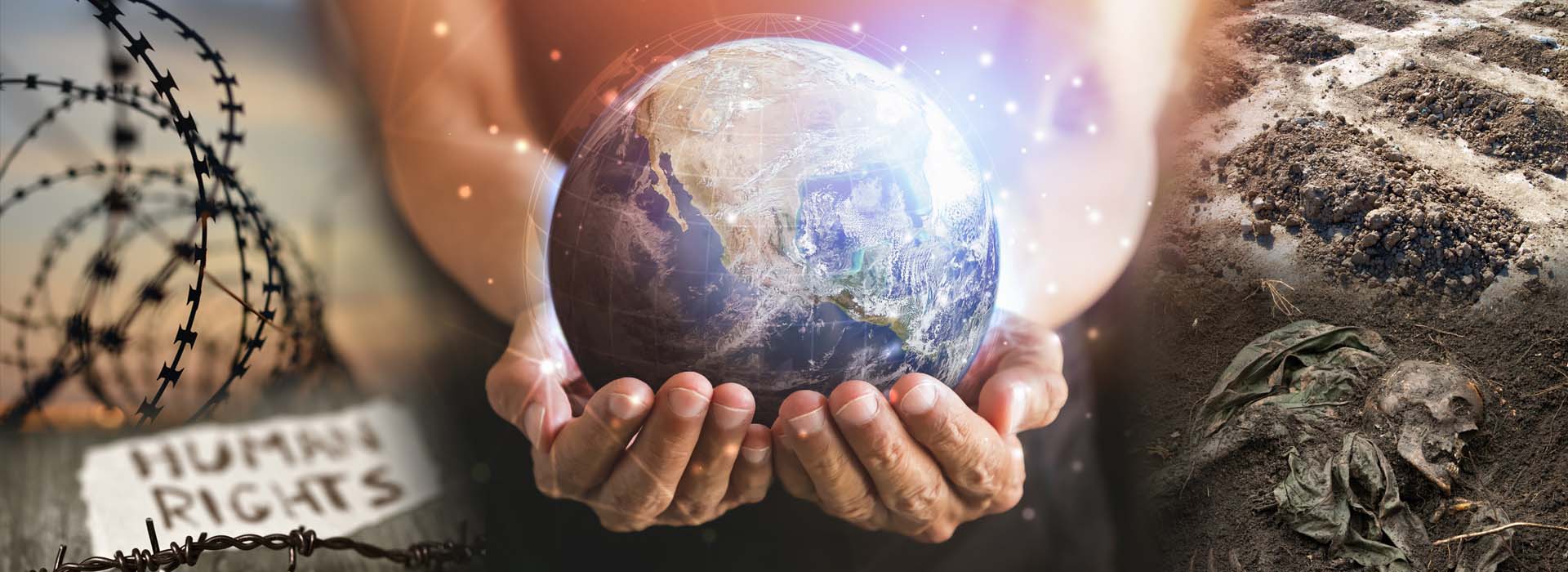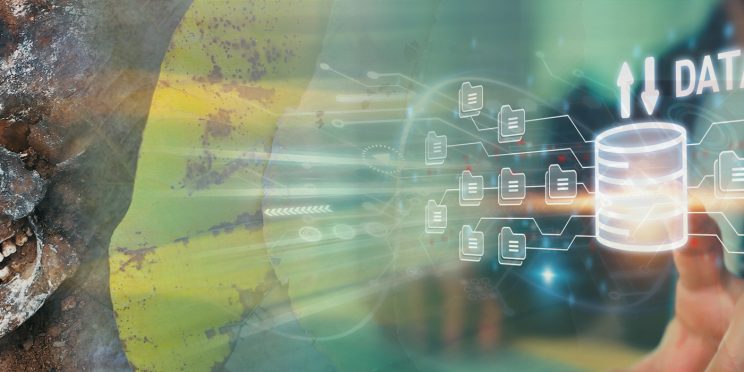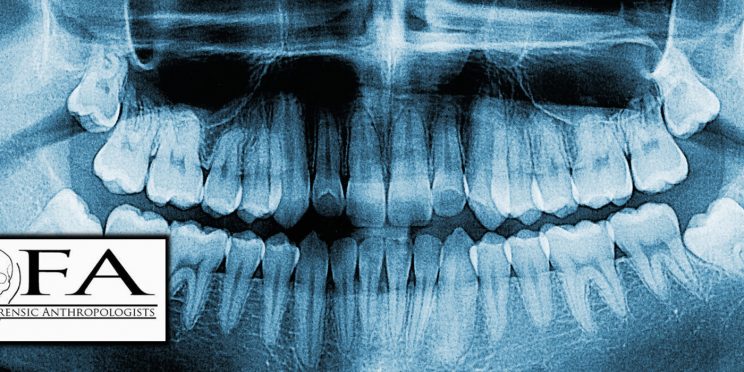← Back to the HHRRC Special Initiative
The Humanitarian and Human Rights Resource Center (HHRRC), an organization within the American Academy of Forensic Sciences (AAFS) supported by the National Institute of Justice's (NIJ) Forensic Technology Center of Excellence (FTCOE), hosted a hybrid virtual and in-person Poster Session where attendees could meet our HHRRC researchers and learn about the application of forensic science to the investigation of humanitarian and human rights injustices.
The virtual Poster Session, which included a digital poster and a short video presentation, was free to view and is available below. The in-person poster session was hosted at the AAFS Annual Scientific Conference in Seattle, Washington and required registration to the conference in order to attend.
Poster Session Details
Date
The event originally occurred on February 22, 2022.
Location
2022 AAFS Annual Scientific Conference
Washington State Convention Center
Seattle, Washington
Date
The event originally occurred on February 22, 2022.
Location
Access the poster session online below.
Poster Presentations
POSTER 1
Identifying Signatures of a Single, Multiple and Mass Grave over Time; An Ongoing Research Project
Soren Blau, AM, BA(Hons), MSc, PhD, FFSc (RCPA), CF & Jon Sterenberg, MSc, PgDip*
ABSTRACT
The poster will outline the research undertaken on identifying signatures of burials at the Australian Forensic Taphonomic Research Facility (AFTER), NSW, Australia. The project involved the burial of several donated human cadavers within three types of graves. These burials have been monitored since 2016, and this poster outlines the results of that research to date.
Double click on video to view full screen.
POSTER 2
A Glimpse of Humanitarian Forensic Medicine in Milano: From the Arduous Tasks of Identifying the Victims of the Mediterranean to Assisting Asylum Seekers and Unaccompanied Minors
Cristina Cattaneo, MD*; Danilo De Angelis, DDS; Debora Mazzarelli; Barbara Bertoglio, PhD; Giulia Caccia, MS; Pasquale Poppa, PhD; Ruggero Donida Labati; Fabio Scotti; Lorenzo Franeschetti; Andrea Palamenghi; Francesca Magli; Marco Cummaudo; Vincenzo Piuri; & Silvana Riccio
Double click to view video full screen.
ABSTRACT
The attempts at the identification of deceased migrants on European coasts have been hindered by the pandemic. Regardless, Labanof and the Italian government are currently working on the antemortem and postmortem data of 68 disasters between 2013 to 2017 and have implemented anthropological and genetic activity with facial recognition systems.
POSTER 3
Cultural Relativity and the Bounds of Forensic Interventions: A Case Study in Uganda
Jaymelee Kim, PhD*; Tricia Redeker Hepner, PhD; Hugh Tuller, MA; Julia Hanebrink, MA; & Dawnie Wolfe Steadman, PhD, D-ABFA
ABSTRACT
Forensic humanitarian action and human rights interventions have been critiqued for their a priori assumptions about survivor goals and narrow definitions of cultural engagement. Findings from applied research in Uganda are presented here to illustrate how cultural knowledge can directly shape forensic practice.
Double click to view video full screen.
POSTER 4
Monitoring of Simulated Clandestine Graves of Dismembered Homicide Victims using Remote Piloted Aircraft, Electrical Tomography, and Ground Penetrating Radar to Optimize Searches in Colombia, South America
Carlos Martín Molina; Kristopher Wisniewski; Vivienne Heaton; Jamie Pringle; Edier F. Ávila; Luis Herrera; Jorge Guerrero; Miguel Saumett; Mario Duarte; Raúl Echeverri; & Alejandra Baena*
Double click to view video full screen.
ABSTRACT
In most Latin American countries, there are significant numbers of missing people and forced disappearances, over 120,000 in Colombia alone. Successful detection of shallow buried human remains by forensic search teams is difficult in varying terrain and climates. Previous research has created controlled simulated clandestine graves of murder victims to optimize search techniques and methodologies. This poster reports on a study of controlled test site results from four simulated dismembered victims' clandestine graves, as this is sadly a common scenario encountered in Latin America.
Multispectral images, electrical resistivity tomography (ERT), and ground penetrating radar (GPR) were collected post-burial. Study implications suggest that, whilst clandestine graves of dismembered homicide victims would likely result in smaller-sized graves when compared to graves containing intact bodies, these graves can still potentially be detected using air-based and geophysical methods.
POSTER 5
Humanitarian Identification of Violated and Disappeared Persons in Chungui District of Ayacucho-Peru
Nory Condor* & Ivan Vargas
ABSTRACT
The main objective of the project was to carry out multidisciplinary and interdisciplinary work consisting of locating the relatives of the victims, to investigate the circumstances of the event, recording antemortem data, and taking reference samples in order to carry out the process of identifying the human remains in the Chungui case in the Peruvian Republic.
During the execution of the project, the Specialized Forensic Team (SFT) diagnosed the situation of 13 cases located in 13 communities of the district of Chungui, corresponding to 125 victims pending identification. Based on this diagnosis, the SFT experts carried out the different stages of the forensic investigation. They located the victim’s relatives, asked for their individualized data and biological profile, made the record in an antemortem file, and extracted reference samples for DNA identification. Then, the experts compared and evaluated the information to identify the human remains recovered.
At the end of the project, 240 deceased and missing persons have been counted in Chungui in relation to 10 cases of fiscal investigation, of which 149 bodies have been recovered and 46 bodies have been identified by anthropological-forensic and molecular biology methods. It has not been possible to identify 103 persons due to the absence of detailed information.
In the course of the project, 63 antemortem files were registered with the individualizing data of the deceased and missing persons. A total of 87 reference samples were obtained.

No Video Available.
POSTER 6
Construction of a National Hydrogen and Oxygen Isoscape for Colombia as a Baseline for the Identification of Region of Origin of Unidentified Victims of the Internal Armed Conflict
Daniela Orozco Ramelli*; Tiffany B. Saul, PhD; Ana Caroline Guatame García, MSc; Jonathan Drake, MSc; & Erica Andrea Castaño Osorio
Double click to view video full screen.
ABSTRACT
The armed conflict in Colombia generated the forced displacement of thousands of victims, the recruitment of people by illegal armed groups who were then deployed across much of the national territory, and the transport of victims from one region to another, some of whom have died and are unaccounted. For this reason, it is important to have tools that establish the geographical origin of unidentified persons buried in cemeteries so that this information can help identify missing persons and locate their potential families.
The purpose of this research is to construct a national hydrogen and oxygen isotope reference map for Colombia based on tap water simples (drinking water), which will guide both the identification of unidentified persons within the country and contribute to global reference databases, such as the University of Utah's database WaterIsotopes.org.
POSTER 7
Root Dentin Translucency and Estimation Age-at-Death in Adults Using Single-Rooted Teeth: Update of the Forensic International Dental Database
Roberto C. Parra; Gonzalo Garizoain*; Karen J. Escalante-Flórez; Claudia M. Aranda; Leandro H. Luna; Lucio A. Condori; Clara I. Valderrama-Leal; & Fernando Retana-Milán
ABSTRACT
In 1992, Lamendin and colleagues introduced a novel procedure for estimating adult age-at-death using the translucency of root dentin as the main estimation variable. This applicability has been positively verified in various populations around the world, although with certain limitations. In 2020, Parra and colleagues used the Lamendin technique and modified the original method by generating a Bayesian algorithm. In this sense, a Forensic Database of International dental information was created, which was recently updated (FIDBv2). It began with 693 observations and now has increased to 3,400 cases from different countries, including Peru, Colombia, Argentina, Mexico, Ecuador, Guatemala, Brazil, Portugal, Spain, France, Italy, United States of America, and Greece. The FIDB contributes, but is not limited to, understanding the behavior of root translucency and periodontal retraction as physiological indicators for adult age-at-death estimation, knowing the margins of error in the results, and strengthening the statistical calculations implemented. So far it has been suggested that the combination of both variables represents a useful method applicable to any population in the world. The results have been optimal in terms of precision and accuracy and it has also been possible to reduce the “trajectory effect”. Moreover, the estimation results have been similar or better when using the FIDB as a reference. The calculation system, including the FIDB, will be available to be used freely online soon.
ARTICLE
The authors of this article acknowledge the Humanitarian and Human Rights Resource Center of the American Academy of Forensic Science and the National Institute of Justice through their Forensic Technology Centre of Excellence Program, RTI International of U.S. Department of Justice and the National Scientific and Technical Research Council; and also to the institutions of each of the authors. A preliminary version of this paper was presented at the American Academy of Forensic Sciences (AAFS) 2022 Humanitarian and Human Rights Poster Session, Seattle, Washington, 22nd February 2022.
Double click to view video full screen.
POSTER 8
Reflections on Methods to Estimate Race and Ancestry on Reference Osteological Samples in the Brazilian Context
Cláudia Regina Plens*; Camila Diogo de Souza; John Albanese; Thais Torralbo Lopes Capp; & Luiz Airton Saavedra de Paiva
Double click to view video full screen.
ABSTRACT
The current article is part of the paper presented at the Colloque International Anthropo-Responsabilité (January 28-29, 2021 —musée du quai Branly — Jacques Chirac, Paris). In order to conduct research and provide advanced training in forensics, the Teaching and Research Centre of Forensic Archaeology and Anthropology (NEPAAF) at the Laboratory of Archaeological Studies (LEA) from the Federal University of São Paulo (UNIFESP) has developed a pioneer project, which deals with the compilation and organization of documentary data (antemortem phase), preparation, curation, and bioanthropological analysis of the skeletons (postmortem phase) associated with an identified osteological collection at the Institute of Teaching and Research in Forensic Sciences (IEPCF). The IEPCF collection currently includes 143 unclaimed skeletons with extensive documentation, including sex, age-at-death, statute, ancestry, place of birth and death, date of birth/death, and cause of death, obtained from the public cemetery records. Identified osteological collections have been traditionally used to develop and test methods in Forensic Anthropology to identify the biological profile through estimation of age-at-death, sex, stature, and ancestry. Given the history of Brazil, the amassing of osteological reference collections is an important challenge to be overcome to address the reality of violence and death. The main goal of the project is to create an anthropological sample to maximize the research and training potential, and to adapt international standard procedures and methods to Brazilian forensic contexts. Preliminary results from assessing ancestry methods using this collection are presented in this paper to assess some of the ethical and human implications of the continued use of race and ancestry in forensic anthropology. Using a sub-sample of 36 individuals (21 males and 15 females), two major methods were tested for their utility in a forensic context. Both the morphoscopic and metric methods performed poorly. Given the parameters of the blind testing, both methods provided reliable information that matched antemortem records equivalent to chance, and in 47-50% of the cases provided wrong information. The results have implications for the adaptation of methods to a forensic context in Brazil, and internationally with respect to human rights investigations.
Funding for this Forensic Technology Center of Excellence event was provided by the National Institute of Justice, Office of Justice Programs, U.S. Department of Justice.
The opinions, findings, and conclusions or recommendations expressed in this event are those of the presenter(s) and do not necessarily reflect those of the U.S. Department of Justice.
Contact us at ForensicCOE@rti.org with any questions and subscribe to our newsletter for notifications.




